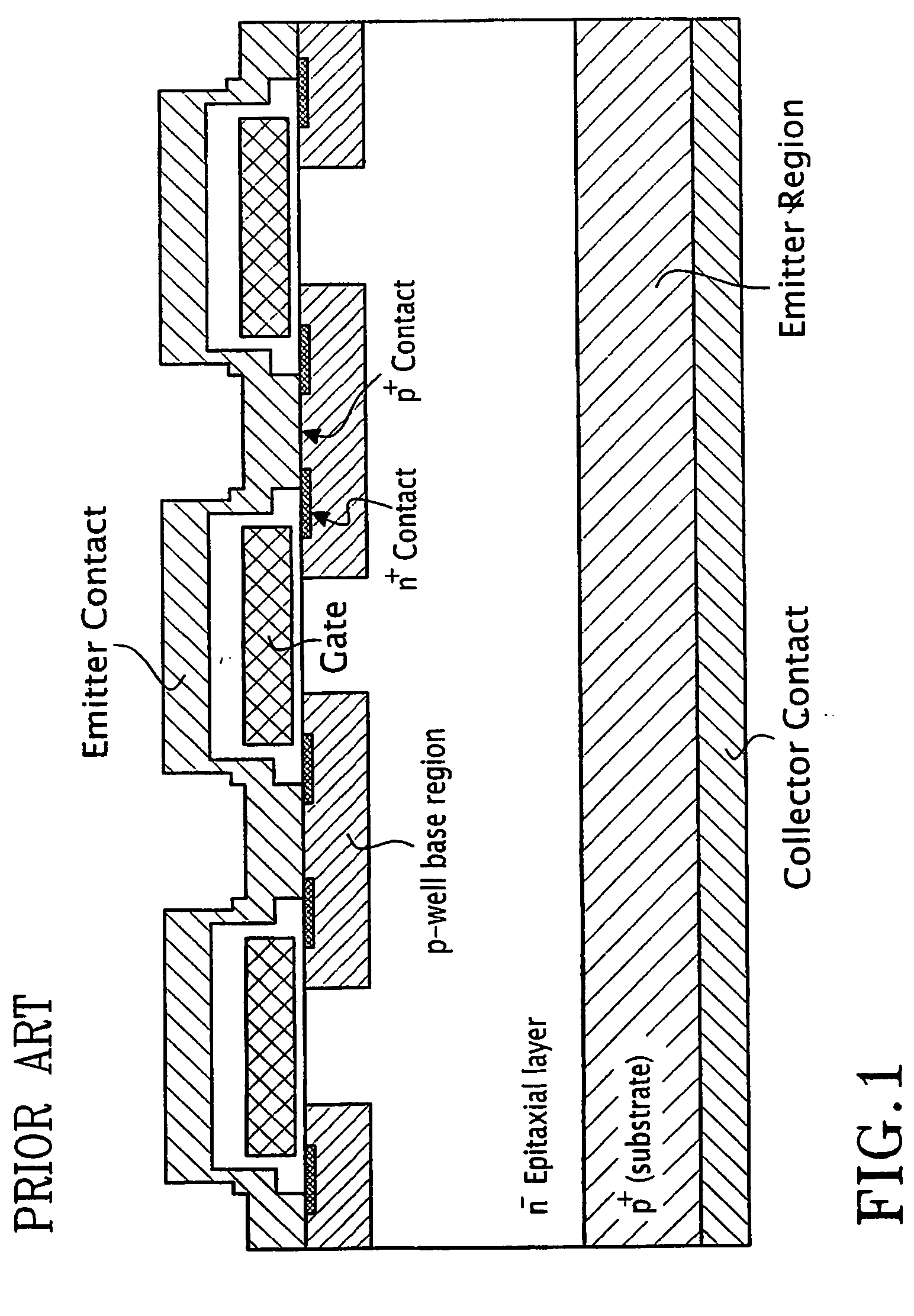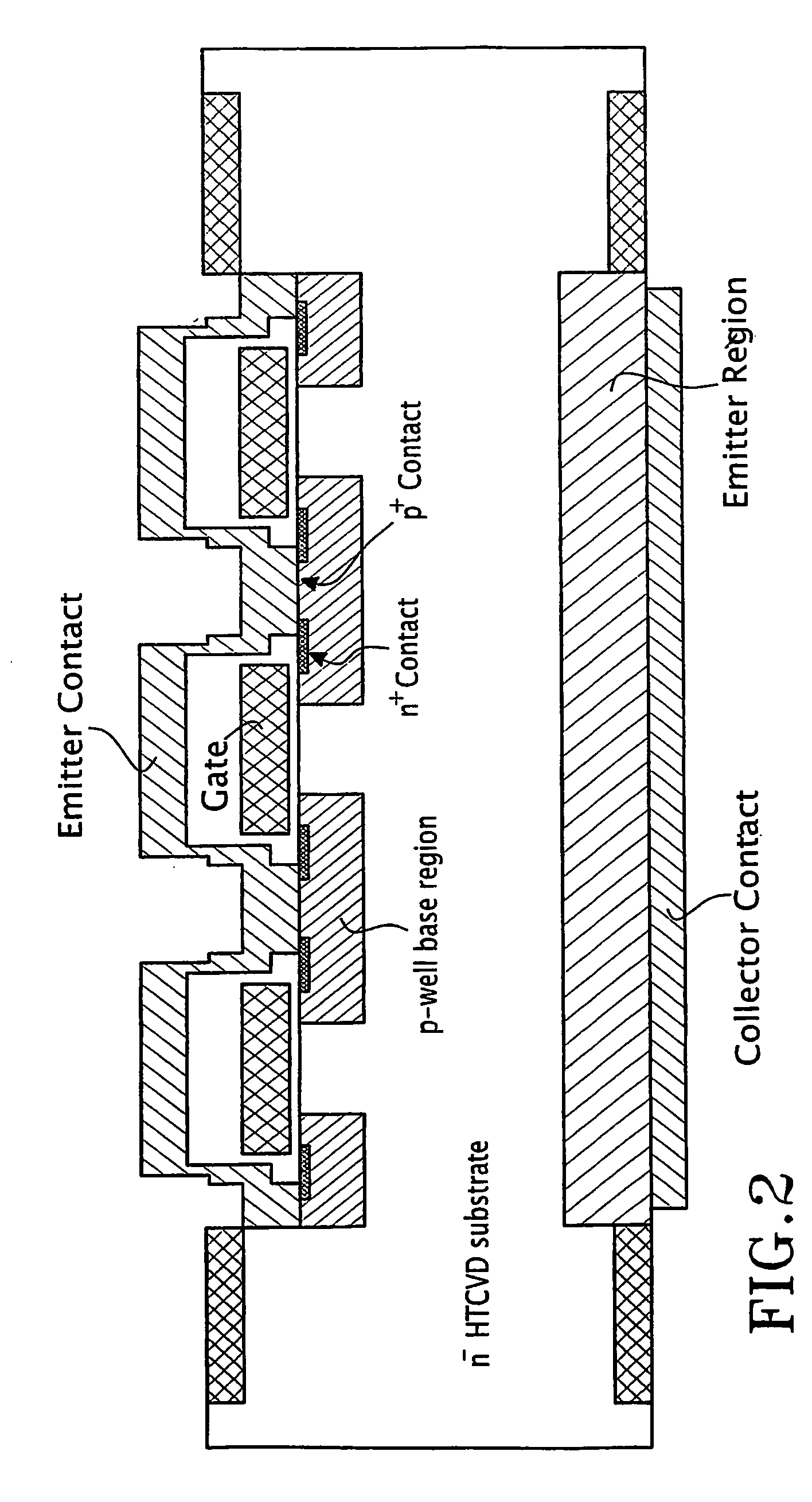Lightly doped silicon carbide wafer and use thereof in high power devices
a technology of silicon carbide wafers and silicon carbide wafers, which is applied in the direction of crystal growth process, basic electric elements, electrical apparatus, etc., can solve the problems of high cost of layers thicker than 100 m, low growth rate, and limited ability of these switching devices to handle higher voltages
- Summary
- Abstract
- Description
- Claims
- Application Information
AI Technical Summary
Benefits of technology
Problems solved by technology
Method used
Image
Examples
example 1
[0043] A SiC single crystal of the 4H polytype was grown in a HTCVD furnace with an average growth rate of 400 μm / h. A small nitrogen flow was added to the silane, ethylene and carrier gas flows fed into the furnace to provide a light n-type doping. Wafers were sliced and polished from this crystal and analysed using the Capacitance-Voltage (C-V), Deep Level Transient Spectroscopy (DLTS), Secondary Ion Mass Spectroscopy (SIMS) and Time Resolved Photoluminescence (TRPL) techniques. The CV and DLTS measurements were identified as not being possible to perform on these wafers due to compensation of the nitrogen donors by at least one deep level. SIMS measurements revealed a Ti contamination at a concentration of 3×1015 cm−3, whereas other impurities such as B, Al and V had at least one order of magnitude lower concentration. TRPL measurements performed on such wafers, either after polishing or after annealing at 1600° C. for 1 hour, showed a decay time less than the detection limit of ...
example 2
[0044] The growth system was modified to suppress Ti contamination into the growing crystal by selecting components preventing release of unwanted impurities, such as transition metals, into the growth atmosphere. A low-doped n-type 4H SiC crystal was grown In conditions comparable to those in the previous example. The Ti concentration in this crystal was decreased to 5×1013 cm−3. DLTS measurements on as-polished wafers from this crystal showed however the presence of deep levels located at about 0.66 eV and about 1,5 eV from the conduction band with concentrations of 4,5×1015 cm−3 and 3×1015 cm−3, respectively (FIG. 5). The carrier lifetime, measured by TRPL on the same substrate, was less than 5 ns. The wafer was subsequently annealed for 1 hour at a temperature of 1600° C. in a hydrogen ambient. The concentration of the deep levels identified by DLTS in the as-polished wafers was drastically reduced after the annealing (FIG. 5). TRPL measurement also showed that recombination of ...
example 3
[0045] The findings of the previous examples were taken into account by modifying the growth conditions to reduce the concentration of intrinsic defects grown-in in the crystal. In this example, the input C / Si ratio of the ethylene / silane gas mixture was increased. FIG. 6 shows that wafers sliced and polished from such a crystal have a substantially lower concentration of the deep levels identified by DLTS at 1,5 eV, but a similar concentration of the Z1 / 2 level. Upon annealing at 1600° C. in either an hydrogen or an argon ambient, the concentration of both deep levels is decreased, as in the previous example (FIG. 6). The carrier lifetime of the substrate annealed in an hydrogen containing ambient was however increased by a factor 3, to ca. 60 ns (FIG. 7). The carrier lifetime of another wafer cut from the same crystal and annealed in a pure argon ambient however remained below the detection limit of the TRPL system.
[0046] It is understood that the teachings of the first embodimen...
PUM
| Property | Measurement | Unit |
|---|---|---|
| carrier concentration | aaaaa | aaaaa |
| thickness | aaaaa | aaaaa |
| thickness | aaaaa | aaaaa |
Abstract
Description
Claims
Application Information
 Login to View More
Login to View More - R&D
- Intellectual Property
- Life Sciences
- Materials
- Tech Scout
- Unparalleled Data Quality
- Higher Quality Content
- 60% Fewer Hallucinations
Browse by: Latest US Patents, China's latest patents, Technical Efficacy Thesaurus, Application Domain, Technology Topic, Popular Technical Reports.
© 2025 PatSnap. All rights reserved.Legal|Privacy policy|Modern Slavery Act Transparency Statement|Sitemap|About US| Contact US: help@patsnap.com



